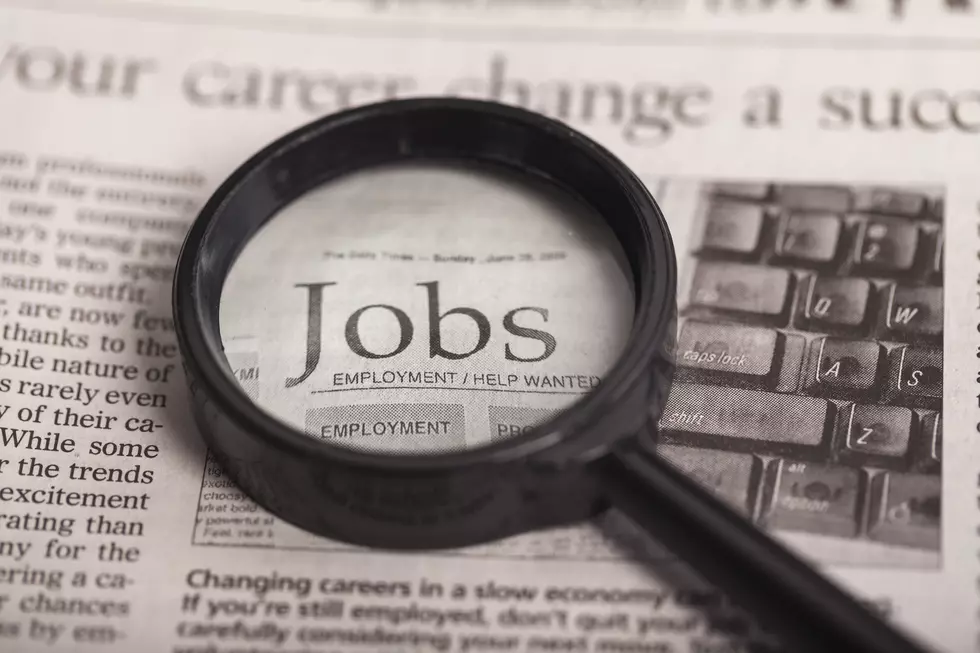![Retail Sales To See 2013 Spike [AUDIO]](http://townsquare.media/site/394/files/2013/01/Retail-Sales.jpg?w=980&q=75)
Retail Sales To See 2013 Spike [AUDIO]
Retail sales are expected to go up 3.4 percent in 2013 which is slightly less than the preliminary 4.2 percent growth seen in 2012.
That's according to the National Retail Federation's 2013 economic forecast. The projections exclude automobiles, gas stations and restaurants.
The subdued forecast comes following a holiday season that went up against Washington's political wrangling over the fiscal concerns, which shifted consumers' spending plans downward. When all was said and done, holiday sales in 2012 grew three percent.
Shop.org, NRF's digital division, expects online sales in 2013 to grow between nine and 12 percent. Online sales in 2012 during the months of November and December last year grew 11.1 percent. "When it comes to digital shopping, retailers have done a great job at getting the word out there that they don't care where or how their customers shop as long as they shop with them," said Kathy Grannis, NRF spokesperson. "That's why we're seeing the marrying of the digital channel with the store channel and I think a lot of people are catching on. Retailers want to let people shop in their stores while they're on their phone. Let's not forget the free shipping promotions that encourage even more people to shop online."
"What we witnessed during the holiday season is an indication of what we are likely to see in 2013. Consumers read troubling economic headlines every day and look at their bottom lines at the end of the month, and they don't like what they see," said NRF President and CEO Matthew Shay. "Pushing fiscal policy decisions down the road will lead to even greater uncertainty and will continue to impact consumers' desire and ability to spend on discretionary items. The administration and congress need to pursue and enact policies that lead to growth and economic expansion, or it could be another challenging year for retailers and consumers alike."
"Retailers will compensate for the drag on household spending this year by managing inventories and focusing on providing value for the shoppers through unique promotions in stores and online and exclusive product lines," said Shay.
"There's no question that the American consumer is resilient based on what we've seen over the past couple of years," said Grannis. "Retail sales in general are pretty healthy. I think Americans have found a way to budget for their families in a way that makes the most sense for them. There aren't too many people who want to splurge, but they are thinking about value and price and budgeting that way."
Among the factors which contributed to the NRF's 2013 forecast:
- Employment: The labor market continues its modest recovery but 2013 is not expected to result in meaningful acceleration in growth. As of December 2012, the unemployment rate has held steady for the last two months at 7.9 percent. Retailers on average employed 150,000 more workers in 2012, and the industry remains one of the biggest employers in the world.
- Income growth: Consumers are constrained by modest growth in income, and recent legislation passed in January increased payroll taxes for millions of workers, further limiting and Americans spending decisions.
- Housing: NRF expects the housing sector to continue to improve and the fundamentals for growth to see continued gains in 2013.
- Inflation: Price pressures continue to be contained. NRF expects the Consumer Price Index to increase 1.9 percent in 2013, below the 2.1 percent increase in 2012.
- Consumer confidence: Current consumer attitudes are likely weighed down because of the handling of the fiscal cliff and the increase in payroll taxes. We expect confidence to improve as the pace of the recovery accelerates in the second half of 2013.
"While it's too early to know the full effect of higher payroll taxes, there's no question that many consumers will feel some kind of impact from the change in their paychecks," said NRF Chief Economist Jack Kleinhenz. "That said, consumers have in the past shown a resiliency in the face of uncertainty and we expect those impacted to adjust to smaller budgets by trading down or simply cutting back on certain items. Overall we foresee some improvements in the second half of the year should the outlook for job creation and income growth improve."
More From 92.7 WOBM










